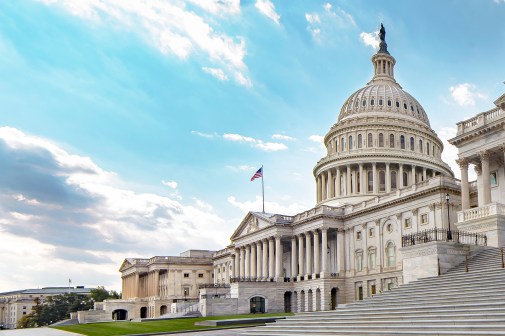AI could change public records requests, professor tells Congress

Information technology upgrades, including adopting artificial intelligence tools, could help governments comply with public records requests, one professor testified before Congress this week.
Margaret Kwoka, a law professor at Ohio State University, whose research centers on information law, government secrecy and the administrative law on transparency, told the Senate Committee of the Judiciary Tuesday that improvements in technology systems would facilitate a more efficient, effective administration of the law.
“Most technological developments require significant up-front investment but promise to pay dividends in efficiency moving forward,” reads Kwoka’s written testimony. “Moreover, these technologies can improve the experience for requesters, reduce administrative burdens on the public associated with transparency, and assist in realizing the goal of a more efficient, accountable government.”
The hearing comes as FOIA offices are being gutted by the Trump administration’s mass firings, while its removal of previously accessible information from government websites is calling government transparency into question.
In an interview, Kwoka told StateScoop that there are three main gaps in the Freedom of Information Act: the volume of requests, outdated technology systems and decentralized agencies.
“Offices are under-resourced to respond to the volume of FOIA requests that agencies receive,” Kwoka said. “The numbers of FOIA requests are ever-increasing, and agency FOIA offices simply can’t keep up.”
Some of the volume challenges, she said, could be addressed by agencies proactively sharing the most requested information with the public rather than waiting for someone to request it.
“If we’re smart about what we require agencies to disclose affirmatively, making sure that it’s published in a way that is usable, downloadable, machine-readable and that the public can access it easily, I think it would cut down in some areas vastly the number of requests that are made and allow agencies to dedicate their existing FOIA processing resources to fewer requests, and thereby hopefully increase the amount of agency compliance, both with deadlines and production of records,” said Kwoka, who added that such an approach is initially costly.
Another gap in processing FOIA requests, Kwoka said, is technology.
“FOIA offices, historically, have been even further behind when it comes to technology,” she said. “Now many of the larger agencies have e-discovery tools in their FOIA offices to do record searches, but I think we need to invest in a lot more technology in agencies to help.”
Kwoka advocated for the adoption of AI to streamline FOIA processes, citing successful pilots at the National Archives and the State Department. She proposed that this rapidly advancing emerging technology can also help agencies identify and proactively disclose frequently requested records.
“I think we would be absolutely crazy not to start testing these tools,” she said. “The volume of FOIAs that are created and maintained and kept in perpetuity is increasing exponentially. The ways in which records are created are increasing. The numbers of kinds of things that we need to search for when the request is made is becoming more and more complex. I think we’re only going to be able to meet this demand for information that the public has if we bring all of our best technology to bear.”
Kwoka also suggested that the Office of Government Information Services build a centralized FOIA portal that can operate across government agencies, similar to a system used by the Mexican government, to enhance efficiency and transparency rather than leave FOIA requests in the hands of a single agency.
“Ideally, the technology would be developed in-house, hiring folks to build and maintain a platform on which all agencies could accept and respond to FOIA requests, communicate with the requester, release records, track all deadlines, appeal all requests, refer for mediation those requesters who want to go to OGIS and maintain a full administrative record in the event that they were eventually litigated, as well as serve as a sort of online repository for all affirmatively disclosed records under FOIA by all agencies,” Kwoka said.
Kwoka said state-level FOIA compliance varies. While there are more fee assessments and fewer deadline issues associated with public information, she explained, state and local departments often do not have enough dedicated staff to process them.
“I think a lot of state offices, being really small, find these requests to be more intrusive and burdensome. They might not have permanent FOIA staff, whose job it is to do nothing but reply to FOIA requests,” Kwoka said. “And so it really does take time away from their agenda.”
At a time when public trust in government institutions is eroding, Kwoka said that the Freedom of Information Act is a cornerstone of government transparency, and must be protected, invested in and maintained.
“The promise of FOIA is to ensure that the public has access to government records, so that the public can hold government accountable, so the government is adequately transparent, so that we can all participate democratically to prevent the abuse of power or corruption or government misconduct that are always of concern,” she said.






